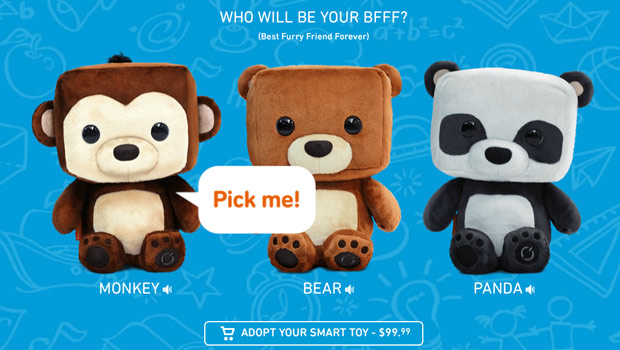
Dr Huw C. Davies
Former Researcher
Huw's interests and projects can be broadly described as digital sociology - the study of how society shapes technology and vice versa, with ongoing collaboration with Rebecca Eynon.

“Whether your child is an artist, a storyteller, a singer or a scientist, I’m the lovable little friend that will bring that out!” says the FisherPrice Smart Bear.
Everyone of a certain age remembers logging-on to a noisy dial-up modem and surfing the Web via AOL or AltaVista. Back then, the distinction between offline and online made much more sense. Today, three trends are conspiring to firmly confine this distinction to history. These are the mass proliferation of Wi-Fi, the appification of the Web, and the rapid expansion of the Internet of (smart) Things. Combined they are engineering multi-layered information ecosystems that enmesh around children going about their every day lives. But it’s time to refocus on our responsibilities to children before they are eclipsed by the commercial incentives that are driving these developments.
Service providers now use free Wi-Fi as an additional enticement to their customers, including families. Apps offer companies opportunities to contain children’s usage in a walled-garden so that they can capture valuable marketing data, or offer children and parents opportunities to make in-app purchases. Therefore, more and more companies, especially companies that have no background in technology such as bus operators and cereal manufactures, use Wi-Fi and apps to engage with children.
The smart label is also a new way for companies to differentiate their products from others in saturated markets that overwhelm consumers with choice. However, security is an additional cost that manufactures of smart technologies manufacturers are unwilling to pay. The microprocessors in smart toys often don’t have the processing power required for strong security measures and secure communication, such as encryption (e.g. an 8-bit microcontroller cannot support the industry standard SSL to encrypt communications). Therefore these devices are designed without the ability to accommodate software or firmware updates. Some smart toys transmit data in clear text (parents of course are unaware of such details when purchasing these toys).
While children are using their devices they are constantly emitting data. Because this data is so valuable to businesses it has become a cliché to frame it as an exploitable ‘natural’ resource like oil. This means every digitisable movement, transaction and interaction we make is potentially commodifiable. Moreover, the networks of specialist companies, partners and affiliates that capture, store process, broker and resell the new oil are becoming so complex they are impenetrable. This includes the involvement of commercial actors in public institutions such as schools.
Lupton & Williamson (2017) use the term ‘datafied child’ to draw attention to this creeping normalisation of harvesting data about children. As its provenance becomes more opaque the data is orphaned and vulnerable to further commodification. And when it is shared across unencrypted channels or stored using weak security (as high profile cases show) it is easily hacked. The implications of this are only beginning to emerge. In response, children’s rights, privacy and protection; the particular ethics of the capture and management of children’s data; and its potential for commercial exploitation are all beginning to receive more attention.
This work is part of the OII project “Child safety on the Internet: looking beyond ICT actors“, which maps the range of non-ICT companies engaging digitally with children and identifying areas where their actions might affect a child’s exposure to online risks such as data theft, adverse online experiences or sexual exploitation. It is funded by the Oak Foundation.
